What’s next for the Irish whiskey renaissance?
By Bill LinnaneIrish whiskey faces a challenge to capitalise on its recent growth, while deciding the correct price point to place its products at.
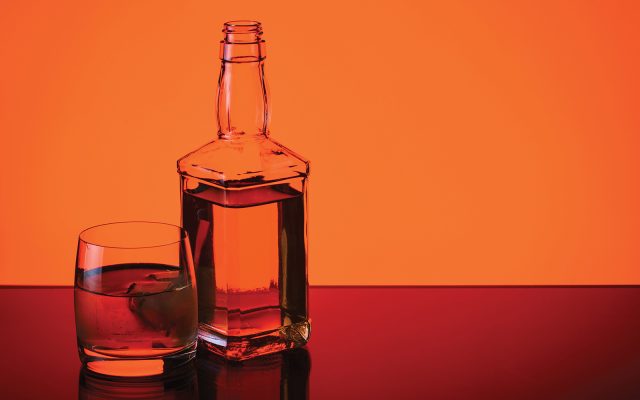
*This feature was originally published in the September 2023 issue of The Spirits Business magazine.
On 4 September 2013, Irish Distillers Limited (IDL) threw a party. The company, formed in 1966 when the three remaining distilleries left operational in the Republic of Ireland amalgamated, invited business leaders, the media, and state dignitaries to its distillery in Midleton, County Cork, to mark the launch of a €100 million (US$109m) expansion. But The Housewarming, as the event was billed, was about more than showing off an expanded distillery, or celebrating the incredible success of Jameson. It was a message to the world that Irish whiskey was back.
IDL – a member of the Pernod Ricard group since 1988 – had a lot to celebrate. The previous year had seen Jameson cap off 23 years of successive growth by reaching the milestone figure of four million nine-litre cases sold, with more than a quarter of that figure being sold in the US alone (in 1988, when Pernod bought IDL, Jameson sold 466,000 cases globally, with Ireland as its main market). In 2013 a company filing by Pernod Ricard valued IDL at €1.68 billion (US$1.83bn), as IDL went from plucky underdog to one of the French drinks group’s top performers.
A decade of growth
In the 10 years since The Housewarming, the island of Ireland has gone from having just four distilleries – Bushmills, Midleton, Dingle, and Cooley – to 45 in operation, with more moving through the planning and building processes. The most common expression used in connection with this renaissance is that a rising tide lifts all boats, but in the case of the Irish whiskey category, Jameson is not so much a boat as it is the tide itself. It sold 10m cases for the first time in the year to 30 June 2022, and is now a top-three global whiskey brand, and a top-eight global spirits brand, according to the IWSR’s 2022 report.
Its triumph in the past two decades has been largely built in the US, where its easygoing accessible identity resonated with consumers (helped by 32 million Americans self-identifying as Irish-American, according to the US census). Brendan Buckley, global marketing director with Irish Distillers, says the US’s thirst for Irish whiskey is not sated: “We believe there is still plenty of room to grow not just our brands, but Irish whiskey in general in this market.”
According to Buckley, IDL is also breaking into new regions: “For example, in 2014 we decided to focus on Nigeria. Today we are selling well over 200,000 cases of Jameson in this market, and it is the third-largest market for Jameson Black Barrel in the world.”
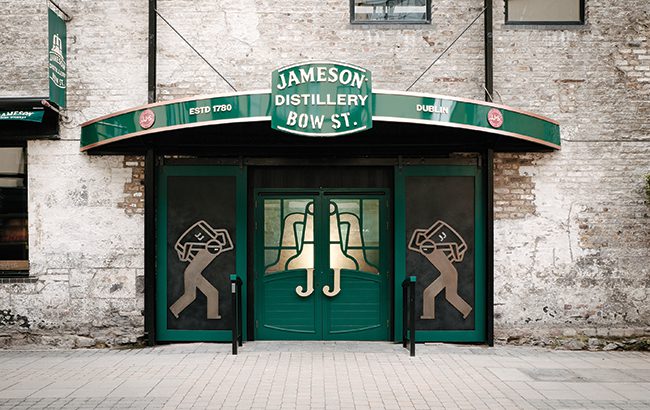
Luxury bottlings
He points out that in the past, Irish whiskey underperformed at the super-premium level compared with Scotch. But he says in recent years things have moved on considerably, with the launch of aged and rare whiskeys, such as the ultra-high-end Midleton Very Rare Silent Distillery Collection. It is Ireland’s oldest whiskey collection, which retailed for €35,000 to €45,000 (US$38,235-US$49,160). He says: “Figures from Discus (Distilled Spirits Council of the US) show that more and more consumers are turning to Irish whiskey as their luxury whisky of choice in the US. Since 2003, high-end premium and super-premium Irish whiskey grew by a staggering 1,053% and 2,769% respectively.”
Mark Reynier, the founder of Waterford Distillery, and former owner of Bruichladdich, says Irish whiskey now needs to look to life beyond Jameson: “One needs to differentiate between Pernod Ricard and everyone else. While they have done an amazing job – there can’t be a bar in the world that doesn’t have Jameson – they have rather defined what Irish whiskey is. That’s what happens when one has a monopoly for nigh on 20 years. The company has single-handedly shaped the entire category, technical file and all. That leaves opportunities for alternative, more independent takes, and premiumisation.”
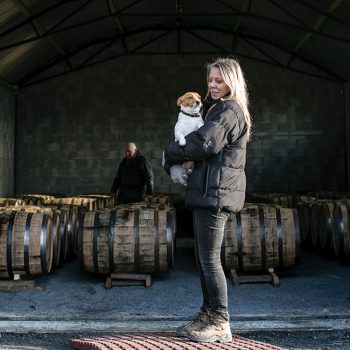
It’s a sentiment echoed by Louise McGuane, who spent decades working in the luxury spirits sector before moving home to rural County Clare, where she built a maturation warehouse on her family farm, and single-handedly resurrected the old Irish tradition of whiskey bonding. In 2019, just four years after she founded her JJ Corry whiskey brand, she released The Chosen – a 27-year-old Irish single malt with a price tag of €6,000.
McGuane says that while Irish whiskey has triumphed as the everyday approachable drink, it needs higher aspirations to ensure the category is as complete and robust as that of other world spirits. “The ultra-premium and luxury subcategories are wholly under-served at the moment, and as consumers learn that the quality and rarity of Irish matches that of Scotch and Japanese, we will see demand rocket from a base of almost zero today.”
Glorious resurrection
That zero baseline is also part of what McGuane sees as the reason for the growth in Irish whiskey, that this glorious resurrection is as much about market correction as anything. But she warns that Irish whiskey now needs to evolve: “The threat could be that the bigger players continue to focus on the lower end of the shelf and establish Irish as a whiskey for ‘release’ rather than ‘discernment’. If consumers in new markets like China become accustomed to Irish being low end it will be hard to break that mindset, which is what we are seeing to some degree in the US today.”
Hyde Whiskey has a range of diverse whiskeys that can be found on shelves in Asia. Founder Conor Hyde says: “Asia is all about whiskey quality, taste consistency, and business relationship development. Hyde is exporting to more than 75 markets worldwide, and Asia is our fastest-growing region right now.”
He says the surge of Irish whiskey brands trying to break the US has created a logjam in some states: “America is a very difficult market for any new Irish whiskey brand to enter, yet it is where they all head first off because it accounts for 38% of global Irish whiskey sales. What is not widely spoken about is the fact that 95-plus per cent of all Irish whiskey sales in the US market are made up by just the top five Irish whiskey brands. That leaves over 200 other smaller Irish whiskey brands slogging it out for the remaining 5% market share.
“Far too many new Irish whiskey brands are entering the US market at a relatively high US$50-plus retail price point on shelf. This is not working as it is far too expensive. I see these brand bottles just gathering dust on the shelf in every state I travel to. The reality is you have to be below the US$35 price point on shelf in the US market to move any significant volumes on a consistent basis. Anything above US$40 is special occasion territory only.”
Biggest threat
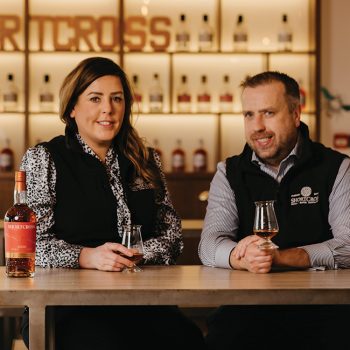
For David Boyd-Armstrong of Rademon Estate Distillery in Northern Ireland, this paradigm of Irish whiskey being perceived as very affordable, while being expensive for newcomers to produce, is something newer distilleries like his have to battle against. He says: “The biggest threat is the point at which buyers believe they can buy Irish whiskey at. As the newer distilleries begin to release their own stock the cost of liquid will rise, and they can’t supply at the pricing of the more macro-scaled distilleries.”
For other newcomers, the path to success does not always lead west. As one of the newest distilleries to open on the island of Ireland, Ahascragh Distillery is a thoroughly modern endeavour. Built in a renovated mill in east Galway, it aims to distil some of the first zero-emissions spirits in Ireland. Also, despite being on the west coast of the country, with the US right across the Atlantic, its focus is eastward, towards Asia, where founder Gareth McAllister worked for many years. He says: “You cannot ignore Asia. There are 83 cities in the world with populations greater than Ireland. Seven out of the top 10 cities by population are in Asia. Four out of the top five are Asian. Tokyo alone has a population of 37 million people. By 2030, 66% of the world’s middle class will be in Asia. It is really a no-brainer, and a huge opportunity for the Irish whiskey category.”
Asian market
John O’Connell of West Cork Distillers, one of the largest independent distilleries, says that although the Asian market is ripe for exploration, the real lack of an age-declared subcategory of Irish whiskey will threaten growth there. He also sees plenty of room in the US for the category: “Irish whiskey only accounts for circa 7% of total whiskey case sales in the US, and there are many states where Irish whiskey is not even on the radar.”
Tullamore Dew, owned by William Grant & Sons, opened a €35m distillery in Tullamore in 2014, and its sales are second to Jameson in the category. According to global brand ambassador John Quinn, this success is down firstly to the approachable taste of Irish whiskey, but also to the hard work and huge investment by larger drinks firms. He says: “We still need to remember that being Irish is not enough, we need to spend a lot of money talking to and attracting consumers. Where any Irish brands have been successful you’ll find a history of significant investment over a long period of time. Consumers don’t change their whiskey preference without good reason. But if you get a consumer to love your whiskey there’s a good chance they’ll love it for life.”
Peter Mulryan of Blackwater Distillery went from being a journalist and author to running one of Ireland’s more experimental distilleries, playing with historic mashbills, and fighting for changes to the state definition of Irish single pot still whiskey.
He points out that money alone is not enough in breaking new markets, or even winning hearts and minds in the US. He uses Bushmills Distillery in Northern Ireland as an example of how strategy is as important as funding. Once part of the Pernod Ricard IDL stable, it was sold to Diageo in 2005 for €298m. In 2014 Diageo traded Bushmills to Jose Cuervo as part of a deal to acquire full control of Tequila Don Julio and US$408m in cash. Since the Mexican drinks giant took control, Bushmills has had a new lease of life. In April this year Bushmills opened its £37m (US$47m) Causeway Distillery, more than doubling the company’s production capacity. In July, accounts filed for the Irish whiskey producer showed its turnover rose by £13m (US$16.5m) to a record £56.2m (US$71.5m) for the 12 months ending 31 December 2022.
Consistent expansion
Donagh McHenry, global brand director at Bushmills, says the company is confident it will grow its single malt share in the years to come. “Beyond core US and European markets, we are seeing healthy momentum in Eastern European markets, exciting early acceleration in India, China, key markets in Asia and Africa, and consistent expansion and growth in global travel retail.”
For the category, the future is bright, and the great Jameson wave continues to roll around the world. Ten years on from The Housewarming, Irish Distillers is building a new distillery alongside the current one in Midleton – a €250m (US$273m) carbon-neutral operation that is expected to be operational by 2025. But for all the positivity, there are still concerns.
The loss of the Russian market hit the category hard, given its position as the third-biggest consumer of Irish whiskey in 2021, importing 716,900 cases, 5.1% of the export market. Brendan Buckley says in May this year Pernod Ricard halted the export of all international brands to Russia. He is unequivocal about the conflict. “From the start of the war, we have utterly condemned the invasion of Ukraine by Russia. Our priority has been protecting our colleagues in the region, providing assistance to our local team members, including direct financial assistance, psychological support, accommodation and employment outside Ukraine for those who required it.”
Beyond international conflicts, there is also the possibility of trade wars and associated tariffs. Cormac Healy, director of trade body Drinks Ireland, says the future is not without concerns: “With over 95% of Irish whiskey being sold in markets outside of the island of Ireland, our industry depends on a supportive global trading environment. Undoubtedly, the growth in export of Irish whiskey has been greatly supported by free trade, however, at the same time there has been a re-emergence of protectionist policies, trade disputes and threats of new tariffs. This and potential supply chain vulnerabilities pose real threats to an export-oriented industry such as Irish whiskey. As an industry, we are ambitious for the future of Irish whiskey. The value of Irish whiskey exports to the all-island economy exceeded €1bn for the first time in 2022. According to the IWSR (Drinks Market Analysis), overall sales of Irish whiskey in 2022 grew by 10.3% from 2021 to 15.245 million cases.
“Having been dominated for so long by sales in Europe and North America, Irish whiskey is recording solid growth in a range of emerging markets such as Africa and Asia. There is so much more growth to be achieved over the next decade.”
Irish single malt whiskey
Irish whiskey continues to find favour both on home soil and overseas. While the category’s pot still styles have created a point of interest among whiskey enthusiasts, single malts are also generating some serious intrigue.
New product development is creating a swathe of interest around Irish single malt whiskeys – and a recent release from The Powerscourt Distillery is adding to the excitement. Back in April, the Irish whiskey producer unveiled a particularly special single malt – the first distilled whiskey from County Wicklow in more than 100 years.
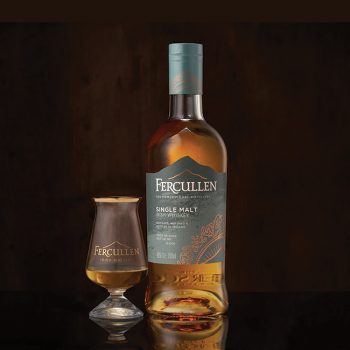 Made entirely from malted barley and distilled at the Powerscourt Estate, Fercullen Single Malt boasts aromas of toffee, vanilla, baking spices, pears, soft leather, cinnamon and pastry crusts. The palate delivers vanilla custard, soft oak, digestives and tarte tatin, followed by oak spice, more soft leather and stewed fruits.
Made entirely from malted barley and distilled at the Powerscourt Estate, Fercullen Single Malt boasts aromas of toffee, vanilla, baking spices, pears, soft leather, cinnamon and pastry crusts. The palate delivers vanilla custard, soft oak, digestives and tarte tatin, followed by oak spice, more soft leather and stewed fruits.
“The spirit laid down at Powerscourt Distillery in 2018 is of exceptional quality,” commented Paul Corbett, master distiller. “To have the opportunity to blend these liquids and establish the DNA of Fercullen Single Malt has been an honour. I look forward to blending many more releases of Powerscourt Distillery liquid in the coming years.”
With more bottlings like this on the horizon, Irish single malts look set for a bright future.
Is single pot still the next big thing?
Peter Mulryan – founder and CEO, Blackwater Distillery: “Single malt is still the most recognisable style of whiskey. The Scots have created a lot of the whisky language we use and expect to see – from age statements to cask treatments to regionalisation. The nerd buzz about pot still will take time to spread but will be helped by the huge growth in world whiskies. Many of the Scotch whisky tropes are now hindering the Scottish industry, as their drinkers get older and the youth market searches for fresh tastes. New world whisky is now much more of a threat to smaller Irish distilleries than anything coming out of Scotland.”
John O’Connell – founder, West Cork Distillers: “There is strong demand for single malt Irish whiskey but blended Irish whiskey remains the dominant subcategory. The growth of pot still Irish whiskey has been slower than I would have anticipated.”
David Boyd-Armstrong – head distiller, Rademon Estate Distillery: “Single malt will remain the number-one premium category, as that’s what 99% of the consumer understand to be premium. That said, mixed mash bill Irish whiskies such as our Shortcross Rye & Malt and the broader pot still category means the variety of Irish whiskies available is almost infinite. That will bring more people to the category.”
James Doherty – co-founder, Ardara Distillery: “We have work to do on the language around the category, in that pot still as a concept and category is poorly understood and championed, even in Ireland. We need to find a way to communicate the flavour benefits of multigrain distilling and its evolution in Ireland, which I don’t think is done very well yet.”
Louise McGuane – founder, JJ Corry whiskey bonders: “For the average consumer, pot still is simply not understood at all. Pot still has its challenges as it has caught on in the US, with many US distilleries releasing whiskies under that subcategory. This makes it even more difficult to communicate a credible distinction. With the reintroduction of peated Irish, the rise of single and double grain, it will be interesting to see where demand shakes out.”
Mark Reynier – CEO, Waterford Distillery: “Cunningly appropriating, from under the Scots’ nose, an inanimate copper object for the title of an entire whisky category already creates a certain level of confusion: every single malt, whether Scottish or Irish (and almost everywhere else) is, by law, distilled in a pot still. The increasing genuine diversity of Irish whiskey, away from the handful of ubiquitous suppliers to date, as new smaller distilleries come on stream, can only add to the Irish whisky revolution. This is exciting.”
Related news
World Spirits Report 2025: RTDs
World Spirits Report 2025: Liqueurs & speciality spirits
SB's 12 Drinks of Christmas: Taffer's Brown Buttered Bourbon
